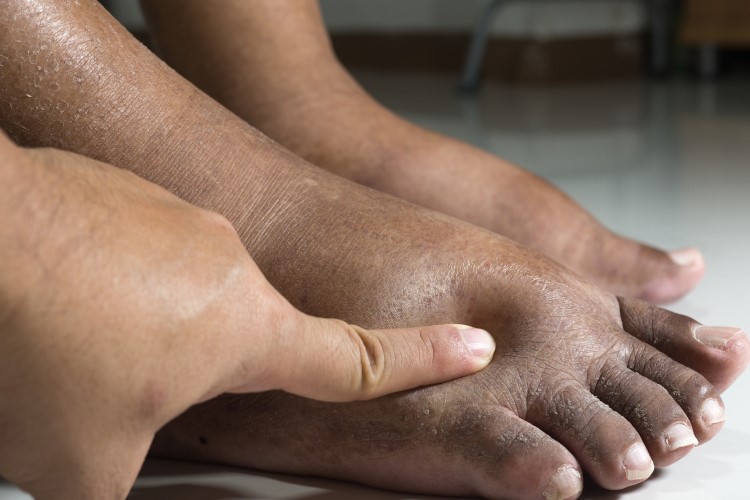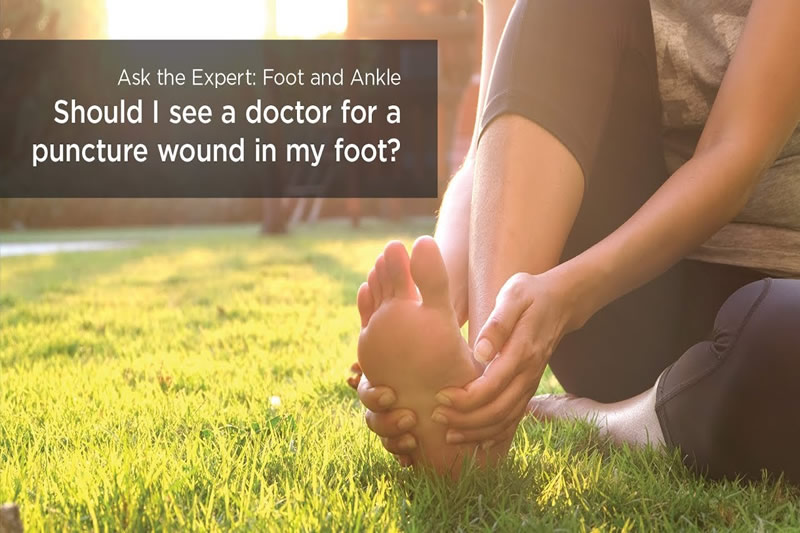
What Is Diabetes?
Diabetes is the inability to manufacture or properly use insulin, and it impairs the body’s ability to convert sugars, starches, and other foods into energy. The long-term effects of elevated blood sugar (hyperglycemia) can lead to serious damage to the eyes, heart, kidney, nerves, and feet. Diabetes affects the lives of nearly 30 million people in the United States and another 84 million people have prediabetes, according to the CDC.
While there is no cure for diabetes, there is hope. With proper diet, exercise, medical care, and careful management at home, a person with diabetes can avoid the most serious complications and enjoy a full and active life. Today’s podiatrist plays a key role in helping patients manage diabetes successfully and avoid foot-related complications.
Symptoms
Diabetes warning signs involving the feet and ankles include the following:
- Skin color changes
- Swelling of the foot or ankle
- Numbness in the feet or toes
- Pain in the legs
- Open sores on the feet that are slow to heal
- Ingrown and fungal toenails
- Bleeding corns and calluses
- Dry cracks in the skin, especially around the heel
Take Action
If you have diabetes, follow these foot care tips:
- Inspect feet daily. Check your feet and toes every day for cuts, bruises, sores, or changes to the toenails, such as thickening or discoloration.
- Wear thick, soft socks. Avoid socks with seams, which could rub and cause blisters or other skin injuries.
- Exercise. Walking can keep weight down and improve circulation. Be sure to wear appropriate athletic shoes when exercising.
- Have new shoes properly measured and fitted. Foot size and shape may change over time. Shoes that fit properly are important to those with diabetes.
- Don’t go barefoot. Don’t go without shoes, even in your own home. The risk of cuts and infection is too great for those with diabetes.
- Never try to remove calluses, corns, or warts by yourself. Over-the-counter products can burn the skin and cause irreparable damage to the foot for people with diabetes.
- See today’s podiatrist. Regular checkups by a podiatrist—at least annually—are the best way to ensure that your feet remain healthy.
When To See The Podiatrist
Because diabetes is a disease affecting many parts of the body, successful management requires a team approach. Today’s podiatrist is an integral part of the treatment team and has documented success in preventing amputations:
- More than 100,000 lower limbs are amputated annually due to complications from diabetes.
- After an amputation, the chance of another amputation within three to five years is as high as 50 percent.
- Including a podiatrist in your diabetes care can reduce the risk of lower limb amputation up to 85 percent and lowers the risk of hospitalization by 24 percent.
The keys to amputation prevention are early recognition and regular foot screenings performed by a podiatrist, the foot and ankle expert.
Click on the image to download the brochure:




